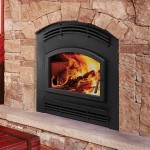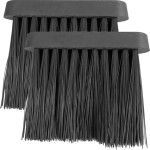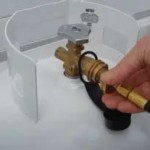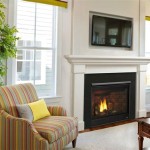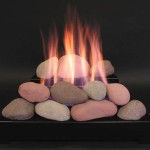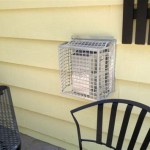DIY Bookshelves Next to Fireplace: A Comprehensive Guide
Integrating bookshelves next to a fireplace can create a cozy and aesthetically pleasing focal point in a living space. It combines the warmth and ambiance of a fireplace with the intellectual appeal of books, resulting in a functional and visually appealing design. This article provides a comprehensive guide to constructing DIY bookshelves adjacent to a fireplace, covering design considerations, safety precautions, material selection, construction techniques, and aesthetic finishing touches.
Planning and Design Considerations
Before embarking on the construction process, meticulous planning and design are crucial. This phase involves several crucial elements: accurately measuring the available space, determining the desired dimensions of the bookshelves, selecting a suitable style that complements the fireplace and overall room décor, and considering safety regulations related to proximity to a heat source.
The first step is to accurately measure the space flanking the fireplace. The measurements should account for any existing architectural features, such as mantels, moldings, or hearth extensions. It's equally important to consider the depth of the bookshelves, ensuring they don't protrude excessively into the room or obstruct foot traffic.
The dimensions of the bookshelves must align with the size and scale of the fireplace and the room itself. Tall, narrow bookshelves might suit a room with high ceilings, while shorter, wider bookshelves could be more appropriate for a smaller, more intimate space. The internal dimensions of the shelves should accommodate the size of the books and objects intended to be displayed. Planning for adjustable shelves can add flexibility and allow for customization based on the collection.
The aesthetic style of the bookshelves should harmonize with the fireplace and the existing interior décor. Traditional fireplaces might benefit from bookshelves built with classic details such as crown molding, fluted pilasters, or raised panel doors. Contemporary fireplaces might pair well with sleek, minimalist bookshelves made from materials like metal, glass, or light-toned wood. Consider the overall color palette of the room and choose materials and finishes that complement the existing design. The choice between built-in shelves, which offer a seamless integrated look, and freestanding units, providing greater flexibility for rearrangement, should also be considered.
Safety is of paramount importance when installing bookshelves near a fireplace. Building codes and regulations often dictate minimum clearances between combustible materials and the fireplace opening or chimney. Research local building codes and fire safety regulations to ensure the bookshelf design complies with all requirements. In addition, select fire-resistant materials, such as fire-retardant treated wood or non-combustible materials like metal or concrete board, for the construction of the bookshelf frame and shelves. The placement of electrical outlets near the fireplace and bookshelves should also be carefully considered, ensuring compliance with electrical safety codes and minimizing the risk of fire hazards.
Material Selection and Preparation
The choice of materials significantly impacts the durability, aesthetics, and safety of the bookshelves. Common materials include solid wood, plywood, medium-density fiberboard (MDF), and metal. Each material possesses distinct properties, advantages, and disadvantages. Proper preparation of the chosen materials is essential for achieving a professional and long-lasting finish.
Solid wood is a popular choice for bookshelves due to its natural beauty, strength, and durability. Hardwoods like oak, maple, and cherry offer superior stability and resistance to warping, but they are generally more expensive than softwoods like pine or fir. Solid wood provides a warm and inviting aesthetic, and it can be stained or painted to match any décor. However, solid wood can be susceptible to expansion and contraction with changes in humidity, which can lead to cracks or warping if not properly sealed and finished.
Plywood is an engineered wood product made from multiple layers of wood veneer glued together. It provides good strength and stability at a lower cost than solid wood. Plywood is less susceptible to warping than solid wood, making it a good choice for large bookshelf components. However, the edges of plywood can be unsightly and require edge banding or trimming to achieve a finished look. It's important to choose a high-quality plywood with a smooth surface for painting or staining.
Medium-density fiberboard (MDF) is another engineered wood product made from wood fibers bonded together with resin. MDF is smooth, uniform, and easy to work with, making it a good choice for painted bookshelves. It's also less expensive than solid wood or plywood. However, MDF is not as strong as solid wood or plywood, and it can be susceptible to damage from moisture. Ensure that all edges are properly sealed before painting to prevent water damage and swelling.
Metal bookshelves offer a sleek and contemporary aesthetic. Metal is strong, durable, and fire-resistant, making it a good choice for bookshelves near a fireplace. Metal bookshelves can be made from steel, aluminum, or wrought iron. They can be powder-coated or painted to match any décor.
Before beginning construction, all materials must be properly prepared. This may involve cutting the wood to size, sanding rough surfaces, filling nail holes or imperfections, and applying primer or sealant. For solid wood, it's important to allow the wood to acclimatize to the room's humidity for several days before cutting and assembling. This will help to minimize warping or cracking later on. When using plywood or MDF, ensure all edges are smooth and free of splinters. Apply edge banding or trimming to exposed edges to create a clean and finished look. Priming the wood before painting or staining will help to ensure a smooth and even finish.
Construction Techniques and Safety Measures
Constructing bookshelves requires careful attention to detail and adherence to safe construction practices. This involves assembling the bookshelf frame, installing shelves, securing the bookshelves to the wall, and ensuring proper ventilation around the fireplace. Adherence to safety measures is essential to prevent accidents and ensure the project is completed safely and efficiently.
The bookshelf frame is the structural foundation of the entire unit. It typically consists of vertical side panels, a top panel, and a bottom panel. The panels can be joined together using screws, nails, or wood glue. For added strength and stability, consider using pocket hole joinery or mortise and tenon joints. Ensure all joints are square and properly aligned before securing them. Use clamps to hold the pieces together while the glue dries.
Shelves can be either fixed or adjustable. Fixed shelves are permanently attached to the bookshelf frame, providing a more stable and rigid structure. Adjustable shelves are supported by shelf pins or tracks, allowing for flexible arrangement of books and objects. To install fixed shelves, use screws or nails to secure them to the side panels. For adjustable shelves, drill holes for shelf pins at regular intervals along the side panels. Use shelf pins that are strong enough to support the weight of the books and objects to be displayed.
Securing the bookshelves to the wall is essential to prevent them from tipping over, especially in households with children or pets. Use wall anchors or studs to attach the bookshelves to the wall. Locate the studs in the wall using a stud finder. Drill pilot holes through the bookshelf frame and into the studs. Use screws that are long enough to penetrate the studs at least 1.5 inches. For walls that do not have studs in the desired location, use wall anchors that are designed to support the weight of the bookshelves and their contents.
Maintaining adequate ventilation around the fireplace is crucial for safe operation and to prevent overheating. Do not block any vents or air inlets on the fireplace. Ensure that there is sufficient space between the bookshelves and the fireplace opening for airflow. Consider installing a heat shield or barrier to protect the bookshelves from excessive heat. Regularly inspect the bookshelves and the fireplace for signs of damage or wear. Repair any damage promptly to prevent safety hazards.
When working with power tools, always wear safety glasses, ear protection, and a dust mask. Use caution when cutting wood and avoid cutting yourself. Keep the work area clean and free of clutter. Follow the manufacturer's instructions for all power tools. Disconnect the power cord before making any adjustments or repairs. Avoid working when fatigued or under the influence of alcohol or drugs.

White Built In Bookshelves Around The Fireplace Green With Decor

Diy Built In Bookshelves From Billy Bookcases With Fireplace Thrifty And Chic
Diy Fireplace Surround And Built Ins Our Blessed Life
Diy Fireplace Surround And Built Ins Our Blessed Life

Fireplace Mantel Surround Pt 2 Bookcase

Diy Built Ins Part 2 Withheart

White Built In Bookshelves Around The Fireplace Green With Decor

Diy Built In Cabinets Around The Fireplace Part 2 Honeybear Lane

How To Build Easy Custom Built In Shelving Basic
:max_bytes(150000):strip_icc()/freeandunfettered-24c0b3d4e3a5492fbf4cb5325c0de5ac.jpg?strip=all)
How To Make Diy Built In Bookshelves 20 Ideas Tutorials

